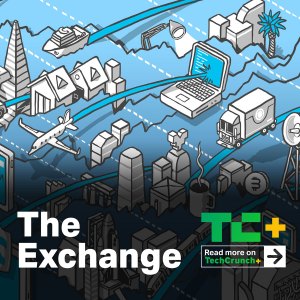After promising the move back in December, Intel announced yesterday that its Mobileye division has confidentially filed to go public. Intel bought the computer vision company focused on the self-driving sector back in 2017, before which it had been a public concern.
The move by Intel to free Mobileye has been long-telegraphed, which means it would be an easy item to set aside in the present news cycle. However, with today’s IPO market frozen like a glacier, any and all exit data is welcome. If Mobileye manages a smooth IPO at an attractive price, the company could help shake loose the exit market for tech companies. No single IPO will fix a bear market, but it would help.
The Exchange explores startups, markets and money.
read it every morning on TechCrunch+ or get The Exchange newsletter every Saturday.
In contrast, if Mobileye struggles when it debuts, or its IPO is pushed back due to market conditions, we’ll know that the public markets remain pretty darn closed for unicorns and other late-stage startups.
The number of companies looking to exit is not small: Databricks (big data analytics, worth $38 billion) is one such company. Chime (consumer fintech, worth $25 billion) is another. Instacart (on demand grocery services, worth $39 billion) is in there as well. Ditto GoPuff (on demand CPGs, worth $15 billion). Also Egnyte (corporate file management and security with north of $150 million ARR, although its most recent private-market price is unclear). Among just that group, there’s more than $10 billion in invested capital waiting for an exit.
So the Mobileye IPO really does matter for the startup market’s largest players, and a host of smaller, less well-known tech startups that would also like to exit, thank you very much.
Let’s remind ourselves of the Mobileye story and how it wound up poised for a spinout from US chip giant Intel. Then we’ll discuss what the company may be worth based on prior reporting and Intel earnings data. Finally, we’ll ask what a winning price might be in today’s markets, and what that range may mean for more mature startups. sounds good? Let’s have some fun!
Full circle
Intel buying Mobileye was “the biggest-ever acquisition of an Israeli tech company,” our colleague Ingrid Lunden reported at the time. announced in March 2017 and fully cleared by antitrust in August of that year, the deal then represented “a fully-diluted equity value of approximately $15.3 billion and an enterprise value of $14.7 billion.”
In a way, a public Mobileye would return to where it was a few years ago: The company had been listed on the New York Stock Exchange since 2014 at the time of its sale to the larger company. Mobileye’s market cap was about $10.5 billion when it was acquired. Intel paid $63.54 per share, a premium compared to market rate, but slightly below the stock’s all-time high closing price of $64.14 in August 2015, CNBC noted.
In Intel’s words, Mobileye had managed to become “the leading supplier for computer vision systems in the automotive industry” less than a decade after its creation in 1999. Given that the self-driving market was heating up at the time, and Intel was hunting for growth and diversification, the deal made some sense.
With the acquisition, Intel’s goal was to position itself “as a leading technology provider in the fast-growing market for highly and fully autonomous vehicles.” The latter was still a few years away at the time and, depending on whom you ask, it may still be. What has that meant for Mobileye?
Historical and recent results
If we think about $15.3 billion back in 2017, we’re discussing a very different technology market from what we saw last year. In 2021, we might have expected Mobileye to be worth a multiple of that original sale price, given how elevated the prices for tech companies were at the time. However, the value of tech revenue has come back to Earth in the interim, so we need to do some work.
